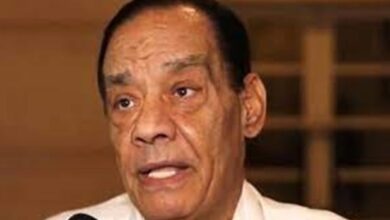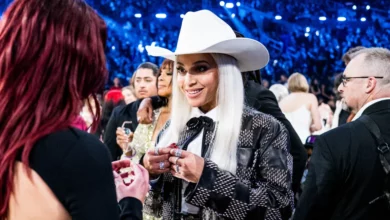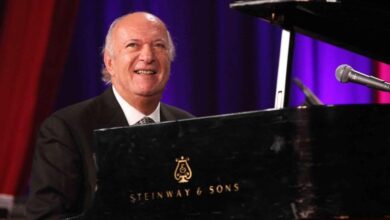Last Tuesday Nass Makan (People of Makan) blended traditional Egyptian and Sudanese sounds with toe-tapping contemporary tunes for an evening of happy melodies budding with intrepid verve.
Hosted by the Egyptian Centre for Culture and Art (ECCA), which was founded in 2002 to preserve traditional music in Egypt, Nass Makan creates a cozy atmosphere in downtown Cairo for the musically curious. High ceilings, parched walls, and black and white painted wooden chairs common to local ahwas (coffee shops) render the space utterly authentic.
Fully supportive of musical innovation, the ECCA (commonly called Makan) encourages a unique alliance between Zar performers, Sudanese vocalists, and gypsy tunes originating in the Delta. The result is a collection of charming arrangements, spontaneous and original. While traditional music is very much cherished by the ECCA, its diversity is magnified through modern interpretations.
“What happens after?” was the question on director Ahmed al-Maghraby’s mind upon launching this original form of music. After locating resources for traditional music, preserving the music with modern technology, and presenting it, unaltered, to a curious audience again and again, al-Maghraby was unsatisfied with the status quo.
“The first step in a renewal is to contain and totally assimilate the old.” These words, uttered by Sheikh Amin al-Khouly, spoke to al-Maghraby’s quest for more.
Thus, Nass Makan came to be, forging a path to renewal through analyzing music at its roots and using traditional techniques, shapes, and sounds to create a fresh and stirringly creative experience. In this enchanting venue, vocals are accompanied by various instruments such as the saxophone, drums, guitar, and traditional instruments like the kawala and arghoul.
Several band members assembled themselves casually across wooden stools, and more strolled in during the performance. Spotlights highlighted their faces, yet no microphones were put in place to magnify their voices or the melodies of their instruments. Further mixing the contemporary with the traditional, the musicians dressed in both galabeyas and shirts, and played wildly contrasting instruments. The audience heard a shiny saxophone and trendy black drums, but also the kawalas and arghouls, which resemble thick wooden straws, as well as a large triangular instrument draped with beads and shinny gold fabric.
When Amin Shahin blew his arghoul, his eyes closed, it was slightly sorrowful. But the sound soon changed when the buoyant Seif al-Dawla added his drums to the arrangement; you simply could not help but tap your feet. The melody is overwhelmingly upbeat. Caught between wanting this tune to last for hours and the curiosity solicited by the rest of the instruments, it is difficult to decide whether or not you want the current sound to change. But Nass Makan is all about change, and soon the saxophone chimed in, to the sheer delight of the audience.
The sound boldly challenged cadence. Extremely oriental, one almost expects a belly dancer to emerge and take advantage of the beautiful shifts and beats of the song.
The drummer appeared to be having the time of his life. His face red with exhilaration, he smiled uncontrollably and swayed his head. The audience, also roused by the music’s vibrancy, smiled and swayed to the melodic infusion. Queue the unorthodox instrument, triangular and boisterous with colored beads strapped around it. Thick strings are stretched across its vacant middle, about to be struck by a man dressed in a galabeya the same shade of gray as his moustache.
Soon, a singer entered the spotlight, and smoothly belted out words in an unfamiliar dialect. Despite not understanding every word, the audience clapped away. One discernible word was “night,” and what a thing to sing about.
Then, another man took possession of the peculiar instrument, singing his heart out while holding it in his arms. Two women contributed to this song about “Shalaby and Saadeya,” a couple in love.
Next, a woman dressed in a black galabeya patterned with red flowers began singing beautifully, calling out to those caught in sleepless nights, while moving her shoulders provocatively. As the song gained momentum, in customary Zar fashion, an oversize tambourine and many douffs (drums) were struck loudly in an increasingly frantic manner. After a musical climax so loud you feel it in your chest, the woman whipped her head sideways and the song was over.
It was a dramatic end to a wonderful night. The enthomusicologist Alan Lomax once said, “If we continue to allow the erosion of our cultural forms, soon there will be no place to visit and no place to truly call home.” On Tuesday, Nass Makan was a home for Egyptian cultural innovation.




